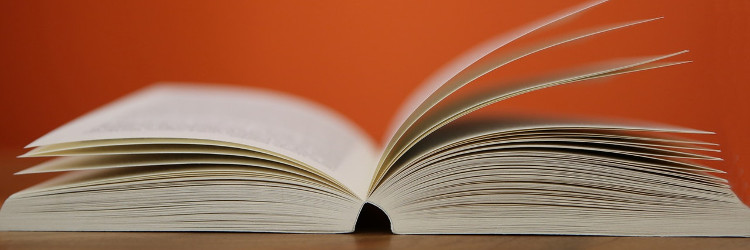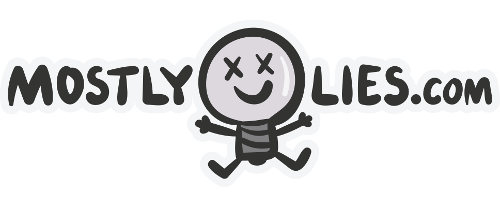First off, there are a lot of books out there. They’ve been a popular item in the past ~4,500 years, and despite the rise of the Internet, physical books will still probably be in fashion for at least a good generation or two.
So in modern times, how exactly does a book come to be? More specifically, the question on most budding authors’ minds is: how does it become a book that sits on a bookshelf… other than one’s own?
This is the real question. You can create a physical book in all sort of ways, from DIY book-binding to submitting a few files and more than a few dollars to a self-publishing “assisted” press (aka vanity press). But you want to know how to make a book that comes with a price tag, perhaps a bar code, and maybe, just maybe, a little slice of profit for the author.
The somewhat obvious but important to note steps are:
- Write it
- Edit it
- Publish it
- Market it
And to add two spicy extra steps, for those with a career in authorhood twinkling in their eye:
- Build back list (aka write another book)
- Build platform (aka leverage the Internets)
Each step along the way comes with its own special breed of challenges, required skill sets, costs, sacrifices and joys. For the purposes of this introductory post, we’ll zoom in on the pair of steps that present the most common hurdles: Publishing & Marketing.
Publishing a book

While there are many different ways to actually go about this, for the sake of simplicity it’s safe to say that there are two main camps when it comes to publishing. Sell your book to a publisher, or self-publish. And in a nutshell, the major tradeoffs when it comes seeing your book on a shelf (or downloaded into a bunch of eReaders) are:
- Selling your book to a Publisher is HARD AND GRUELING AND DRAINING, but once you do you’ll get paid and have a good chance of seeing it on the shelf
- Self-publishing your book is relatively easy, but getting paid is HARD AND GRUELING AND DRAINING because all the marketing is on you
While there is much, much more to consider (see: further reading section below), in essence the adage of ‘if it were easy everyone would do it’ rings true as always, and you have to pick your preferred brand of hardship and taxation.
Why traditional publishing (selling your book to a publisher) is HARD

Most publishers who have the resources to actually pay you and get your book out there are buried in submissions. Most wont even look at your manuscript unless it comes from an agent they trust. You might be a better writer than literally everyone else submitting, and they still wont take it because a) it’s not the kind of thing they want to publish, b) the market conditions won’t allow them, c) other business reasons that won’t be explained to you, d) someone in the chain of command stubbed their toe that day.
The first step, before you worry about a) thru d), is to get yourself an agent… which is HARD.
Agents, like publishers, are buried in submissions… and since agents are the publishers’ first line of defense against crap, guess what most of the stuff they get is?
Lucky for you, there’s a free online resource that you can probably read in its entirety in one, solid, dedicated week that will arm you with everything you need to know about landing an agent for your book. It will demystify, and it will downgrade all-caps HARD to ‘Challenging, but totally possible.” It is called QueryShark, and I plan to do a distillation of all its incredible, invaluable wisdom someday in the future, but for now simply make sure you dedicate a week or two or whatever to read it top to mo’fuggin’ bottom, until you start to dream about queries and their formats and all the landmines that naive submitters step on. Do that, and you’ll be ahead of 90% of the people submitting based on your knowledge alone.
Why self-publishing is HARD, aka marketing a book

The physical act of self-pub is actually quite easy. In Amazon’s KDP, to list a print on demand paperback book, you need to do four things:
- Submit relevant tax and personal info to Amazon to be able to legally sell stuff through them (nothing crazy here)
- Upload a PDF of your words, ideally properly formatted
- Upload a PDF of your book cover, formatting must be correct
- Fill in some info about your book, like its title and keywords and price
Doing your own taxes is probably more of a chore.
Where it gets tough is selling more than four copies to supportive friends and Mom. You need to market your new piece of art. And this is HARD.
First off, marketing is not advertising. You probably need to advertise, which isn’t easy either… but advertising is a subsection of marketing. Here’s a quick list of things that are, in fact, marketing:
- Your actual story (product). What’s the target market? It doesn’t matter one lick what you as an artist think about your story’s merits. If it doesn’t meet a target market’s needs you won’t sell it.
- Packaging. This is your cover art and description. People judge books by covers, its built into human DNA and there’s nothing the silly phrase begging otherwise can do about it.
- Timing. Story types and genres fall in and out of fashion.
- Length. Are you within the normally accepted word count bounds for your market, your genre, your type of story? If no, what’s your very good reason for being outside of them?
- Price. Lower isn’t better. Pricing sends signals to buyers. Like length, there are parameters to be aware of.
- Reviews. These are the lifeblood of online sales; what’s your constant, ongoing plan to nurture these pre-critical mass?
- Supplier relations (physical distribution). If you’re looking to get bulk quantities into small, medium or big bookstores… well, you better know how to do that.
- Advertising. Are you going to pay for this, or try to spin up grassroots stuff? If you’re paying, is it digital or traditional (hint: start with digital unless you’re filthy rich).
I’ll stop there. Yeah, there’s more.
See, if you traditionally publish via the Agent > Publisher route, the publisher will have entire departments dedicated to the various marketing points listed above. You don’t have to worry about any of it, except the writing and the editing (listen to your editor).
The silver lining

So, either way… making books that appear on bookshelves or eReaders is going to be HARD. It always has been!
The good news is that there has never been a better time to be climbing this hard, rocky mountain. There are an insane amount of 100% free and super affordable resources out there that you can clip to your mountaineering pack. I linked you to one of the best ones I know of right in this post (bonus tip: QueryShark is worth exploring if you do not plan to seek an agent either, because there is tons of overt and covert marketing advice buried within as well).
My goal with the Self Pub Hub is to provide a little centre for aspiring mountaineers who are leaning more toward the self publishing route. I am both a self published author and a marketer by trade, so I’ll have some unique insight as I make my own climb, I’ll be (selfishly) building my own platform in doing so (point #6 above, more later), and I’ll be paying it forward from all the bloggers, authors and marketers from which I’ve gleaned this knowledge, inspiration and drive to stare down the ‘all-caps HARD’ and forge ahead in spite of it.
In the next post, we take a closer look at the trials and tribulations ahead.
Further reading
Pros And Cons Of Traditional Publishing vs Self-Publishing. A thorough, comprehensive breakdown of traditional vs. self-publishing written by author Joanna Penn.
This post was last updated April 1, 2018
